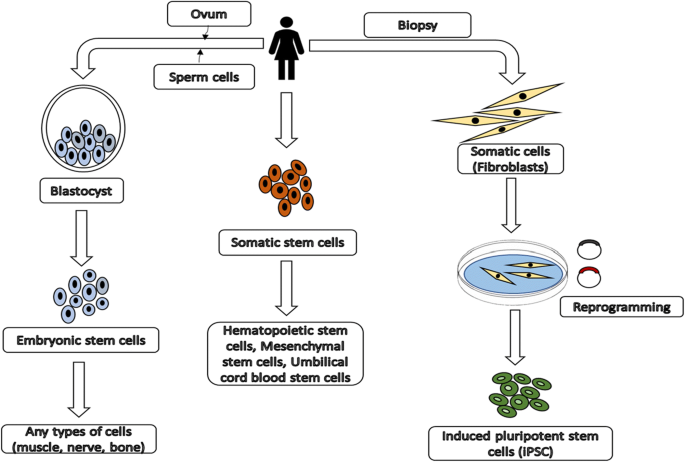Table of Contents

[/image][=video]
[/video]
There are lots of kinds of stem cells. In general, the term stem cell describes a classification of cells that trigger other cells (like skin, blood, heart, and muscle cells) by duplicating and setting apart in feedback to chemical hints. Totipotent stem cells show up at the earliest stage of development and are the only stem cells which can generate embryonic stem cells and the placenta.
Bone marrow transplant (BMT) is a special therapy for clients with particular cancers cells or other diseases. A bone marrow transplant includes taking cells that are generally discovered in the bone marrow (stem cells), filtering system those cells, and providing back either to the contributor (patient) or to an additional person. The goal of BMT is to transfuse healthy and balanced bone marrow cells right into an individual after his or her very own undesirable bone marrow has been treated to eliminate the uncommon cells.
The blood cells that make other blood cells are called stem cells. The most primitive of the stem cells is called the pluripotent stem cell.
It is the stem cells that are required in bone marrow transplant. The objective of a bone marrow transplant is to heal numerous illness and types of cancer cells. When the dosages of radiation treatment or radiation needed to cure a cancer cells are so high that an individual's bone marrow stem cells will be completely harmed or destroyed by the therapy, a bone marrow transplant might be needed.
Perimenopause Treatment in Westland
This procedure is often called rescue. Change bone marrow with genetically healthy working bone marrow to stop more damage from a genetic illness process (such as Hurler's syndrome and adrenoleukodystrophy). The risks and benefits must be considered in a detailed discussion with your healthcare provider and experts in bone marrow transplants prior to the procedure.
There are different kinds of bone marrow transplants relying on who the donor is. The different kinds of BMT consist of the following: The benefactor is the client himself or herself. Stem cells are drawn from the client either by bone marrow harvest or apheresis (a process of accumulating outer blood stem cells), icy, and then returned to the patient after extensive therapy.
The benefactor shares the same hereditary kind as the patient. Stem cells are taken either by bone marrow harvest or apheresis from a genetically matched contributor, typically a brother or sis. Other contributors for allogeneic bone marrow transplants may consist of the following: A haploid-identical suit is when the contributor is a moms and dad and the hereditary suit is at least half identical to the recipient.

Matching entails keying human leukocyte antigen (HLA) tissue. The antigens on the surface of these special white blood cells establish the hereditary makeup of a person's immune system. There are at the very least 100 HLA antigens; however, it is thought that there are a couple of major antigens that establish whether a benefactor and recipient match.
Clinical study is still investigating the duty all antigens play in the process of a bone marrow transplant. The more antigens that match, the better the engraftment of given away marrow. Engraftment of the stem cells occurs when the donated cells make their way to the marrow and start making brand-new blood cells.
Perimenopause Treatment servicing Westland, Michigan
All people work with each other to offer the finest possibility for an effective transplant. The group consists of the following: Health care providers who specialize in oncology, hematology, immunology, and bone marrow hair transplant.
Specialists that will help you meet your nutritional needs before and after the transplant. They will work closely with you and your family members. Professionals who will certainly aid you become strong and independent with motion and endurance after the transplantation. Chaplains who provide spiritual care and support. A number of various other employee will examine you before transplant and will certainly provide follow-up care as needed.

A full case history and physical exam are carried out, including several tests to review the patient's blood and organ functions (as an example, heart, kidney, liver, and lungs). A client will certainly frequently enter the transplant center up to 10 days prior to transplant for hydration, assessment, placement of the main venous line, and various other preparations.
For an allogeneic transplant, a suitable (tissue entered and matched) benefactor has to be available. Volunteer marrow benefactors are signed up in numerous national and global pc registries.
Contributor sources offered include: self, brother or sister, parent or relative, nonrelated individual, or umbilical cord from an associated or nonrelated individual. There are national and international pc registries for nonrelated individuals and cord blood. Some relative may be keyed in as a result of the need to assist. These loved ones may or might not choose to have their kind registered for use with other receivers.
Regenerative Therapy
Examinations connected to his or her health, exposure to viruses, and hereditary evaluation will certainly be done to determine the degree of the match. The donor will certainly be offered instructions on exactly how a bone marrow donation will be made. Once a suit for a person needing a bone marrow transplant is discovered, after that stem cells will be accumulated either by a bone marrow harvest.
Or by a peripheral blood stem cell collection. This is where stem cells are gathered from the circulating cells in the blood. Of the two, peripheral blood stem cell donations are currently extra usual. Cable blood has actually already been accumulated at the time of a birth and kept for later usage.
Navigation
Latest Posts
Regenerative Therapy servicing Westland, Michigan
Perimenopause Treatment around Westland
Menopause Treatment